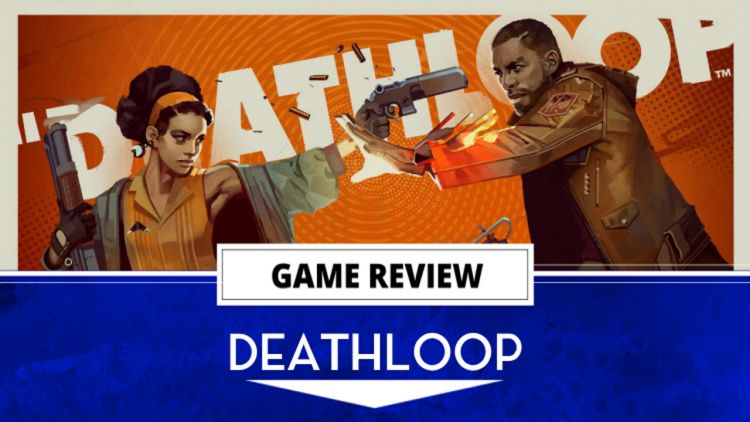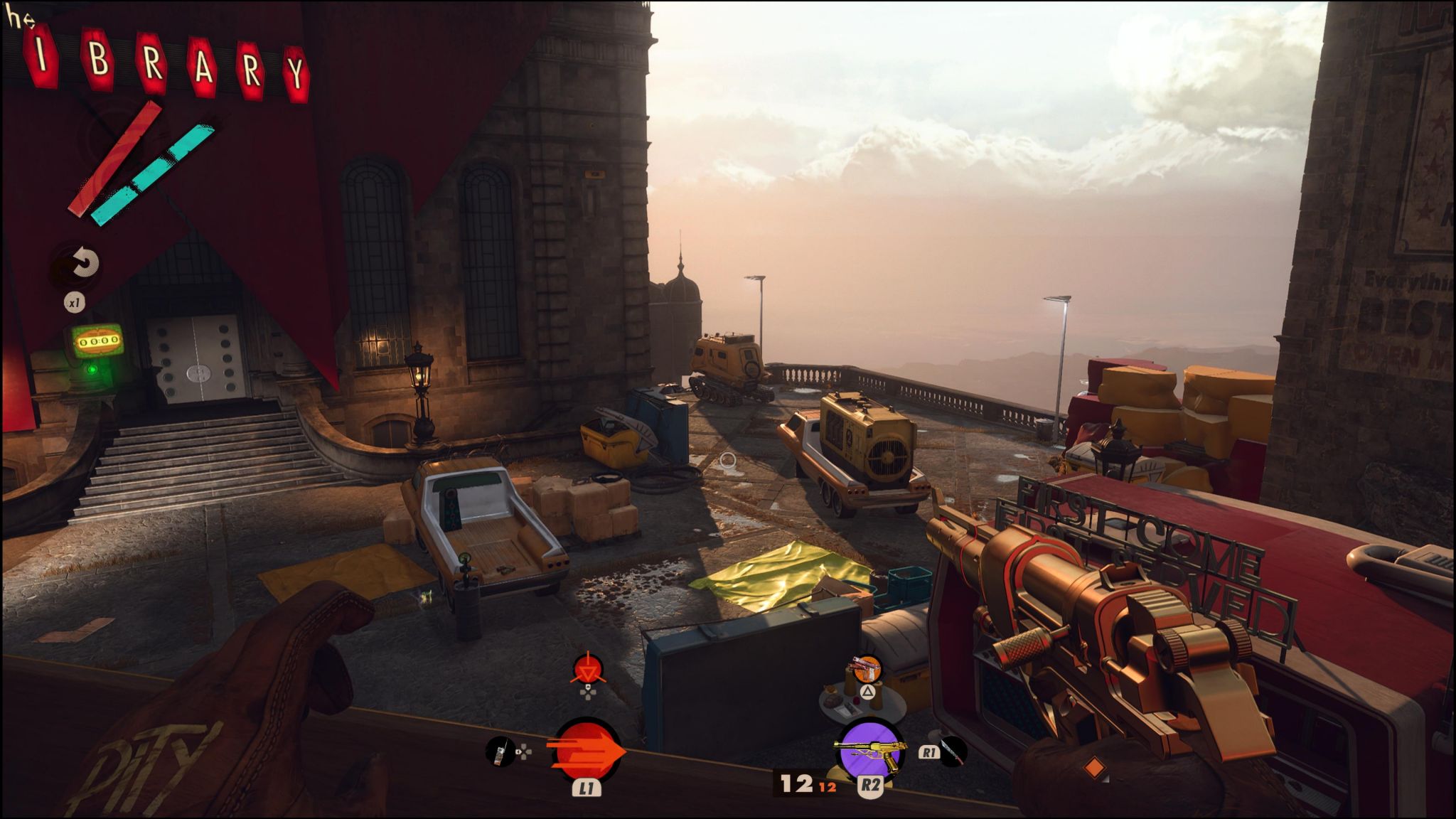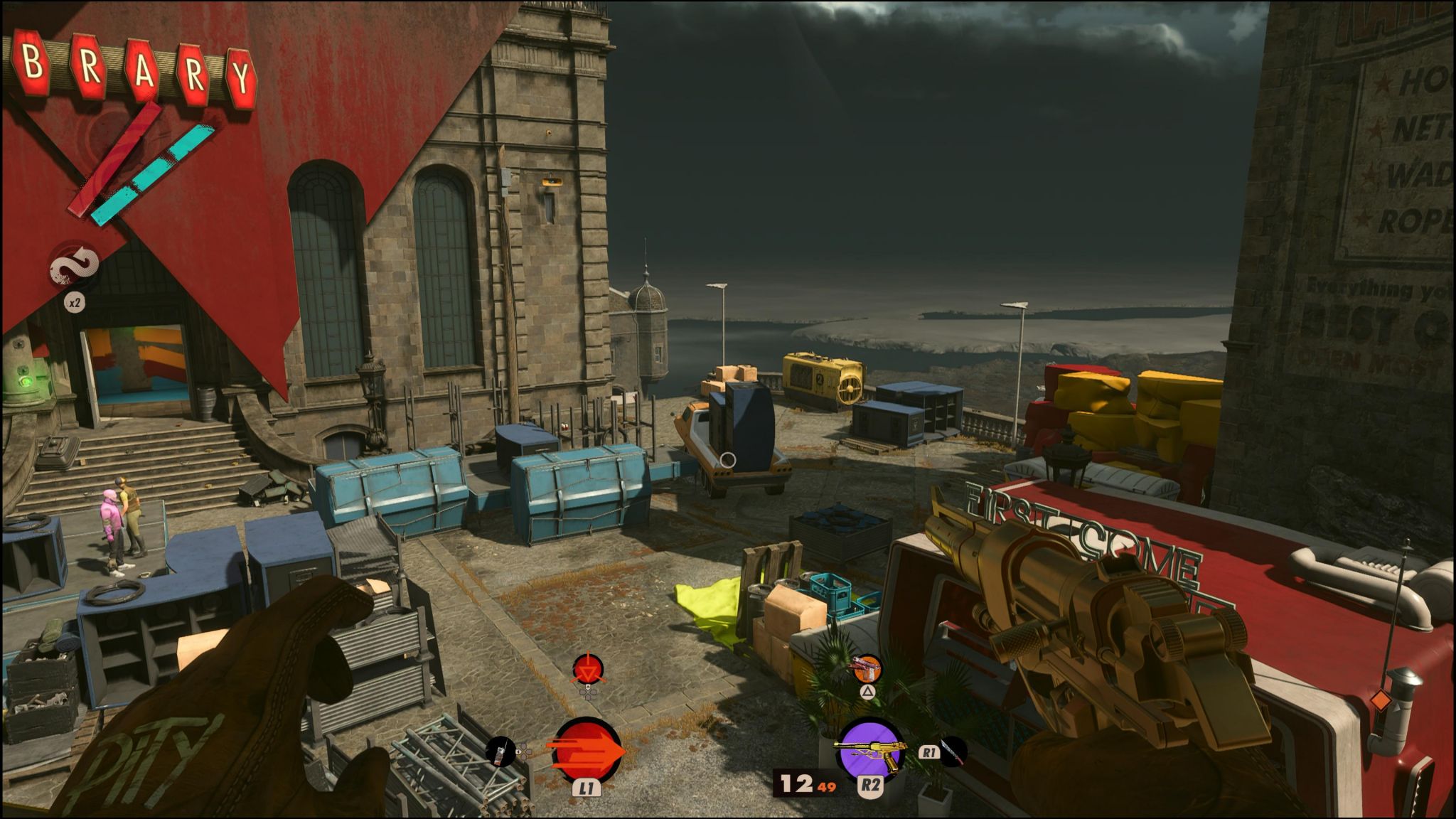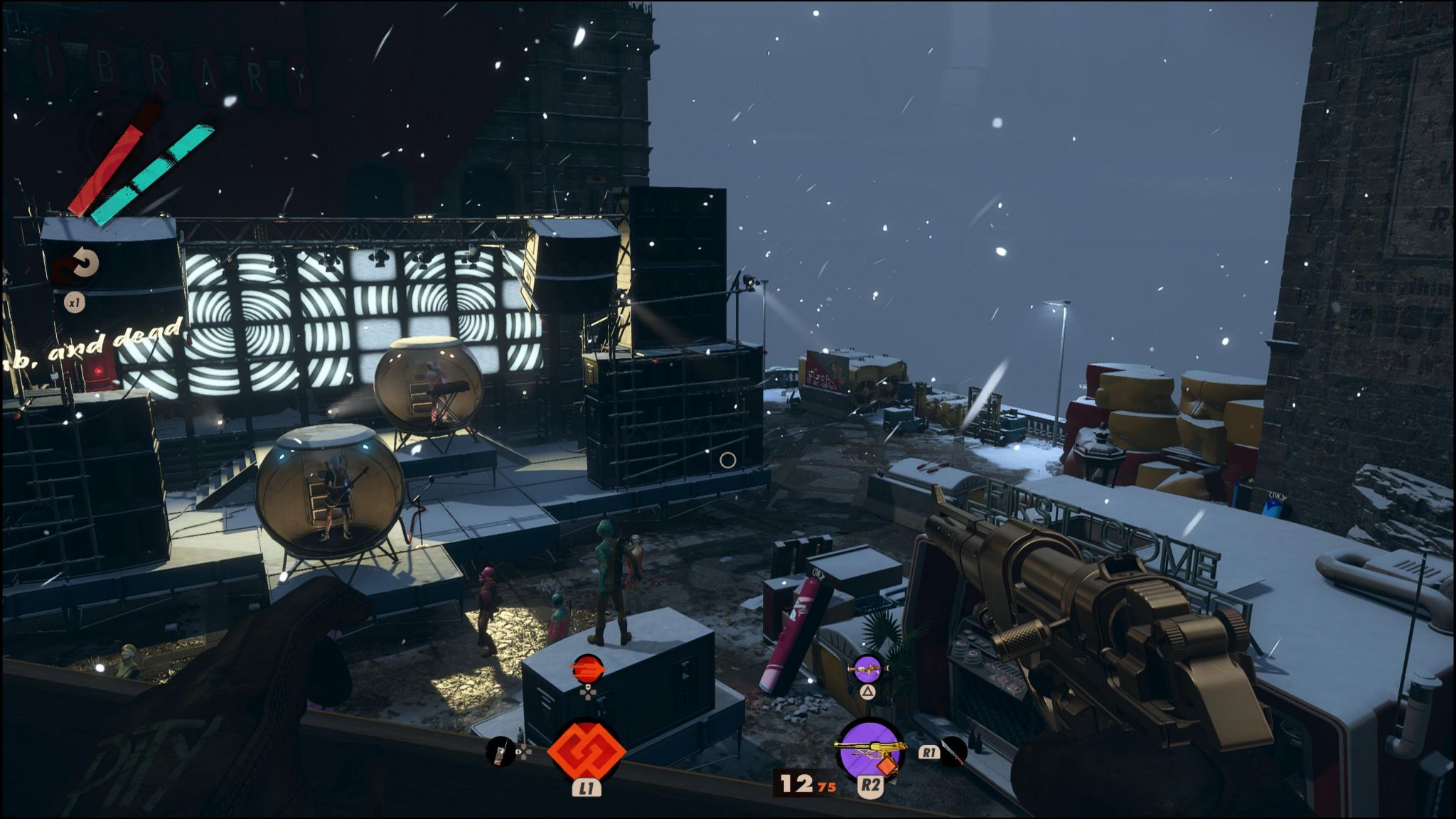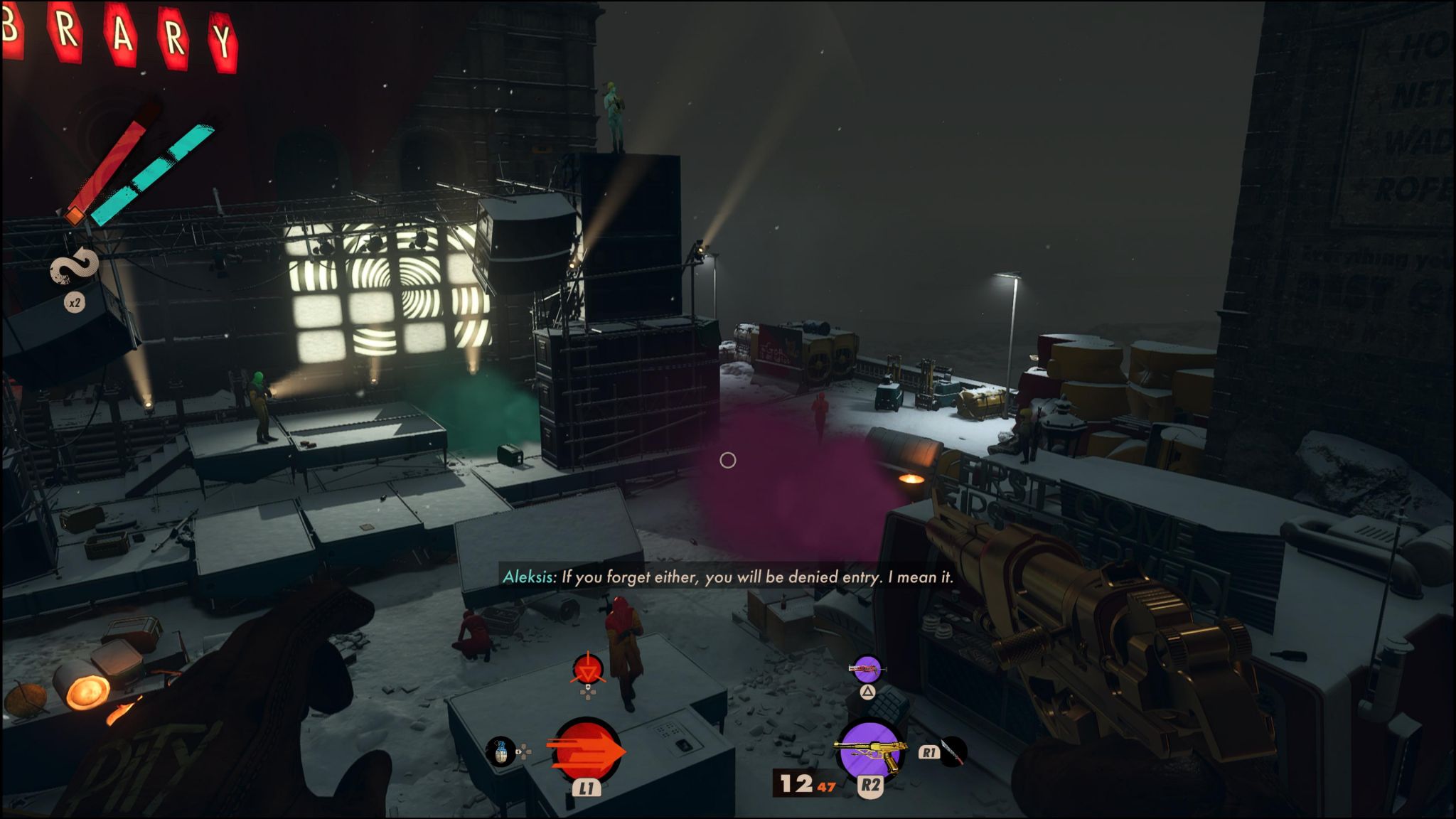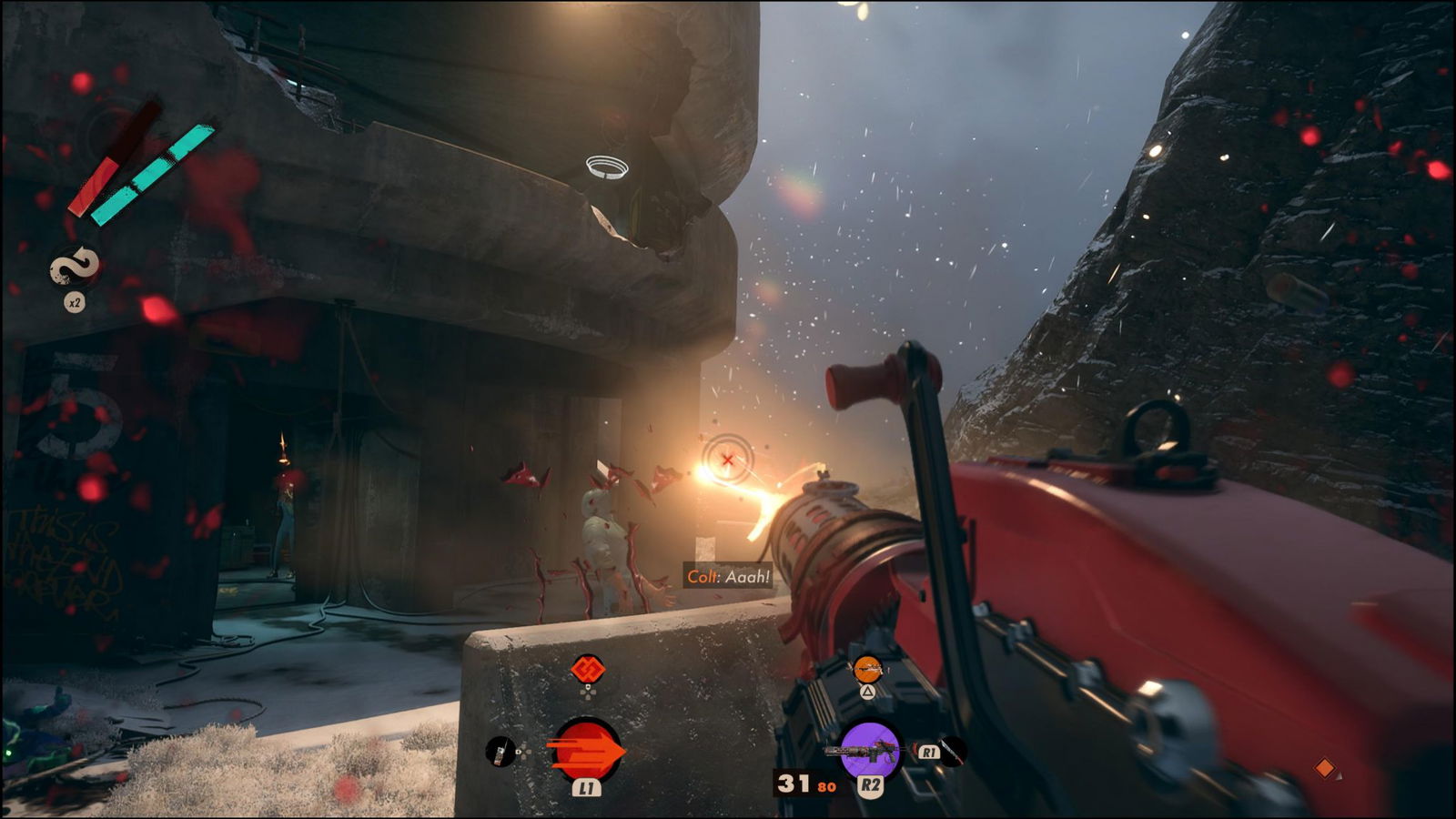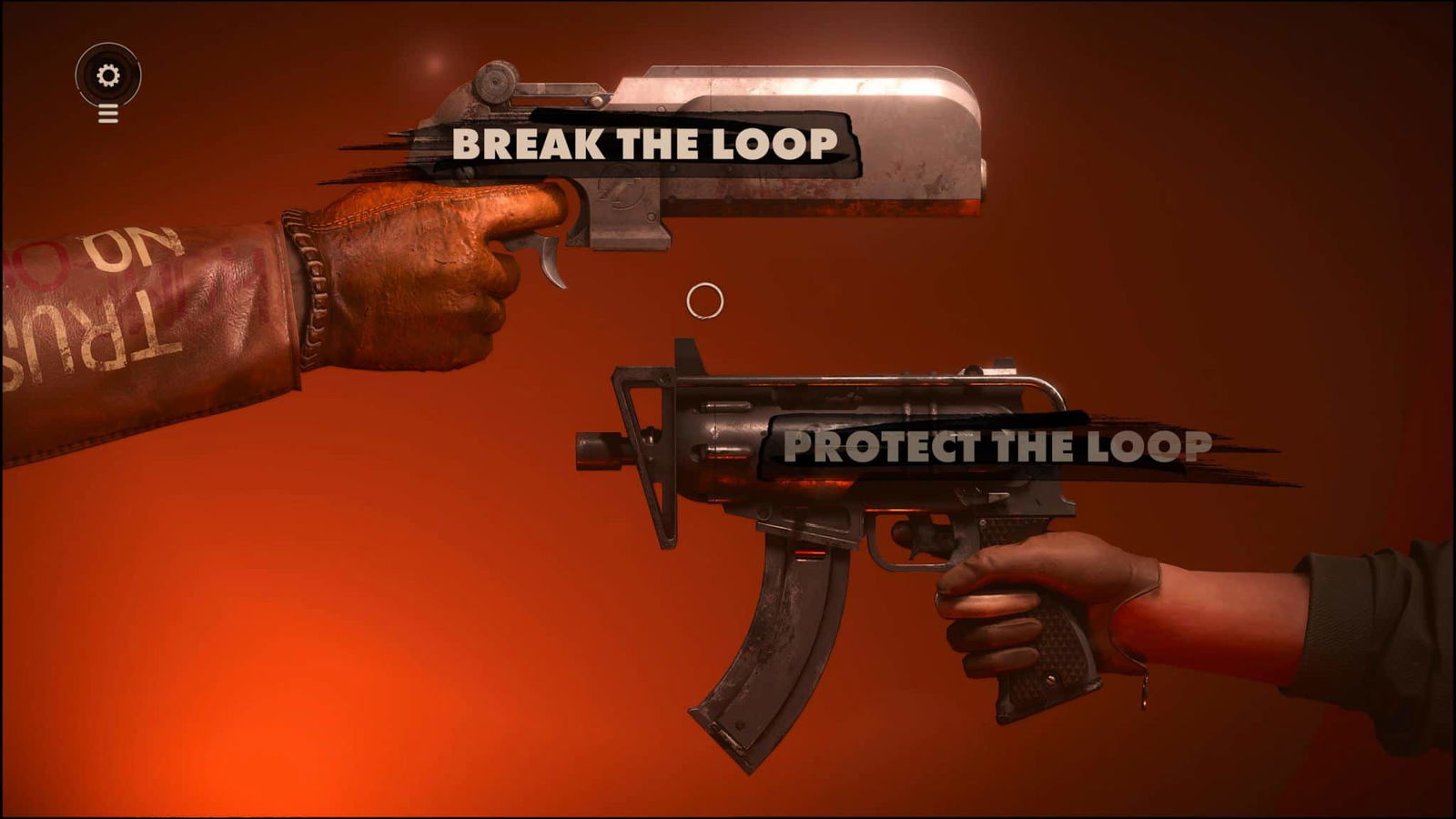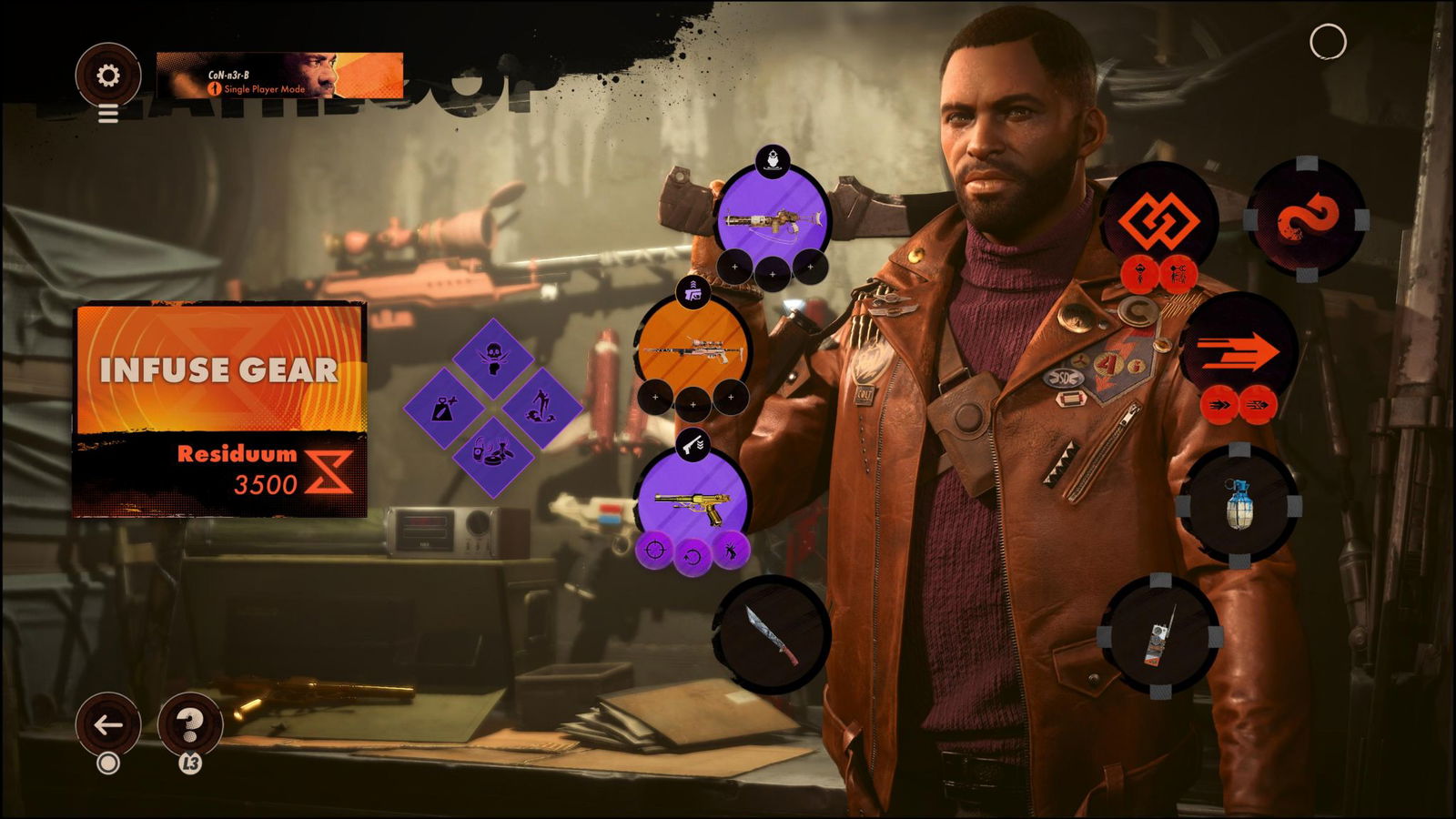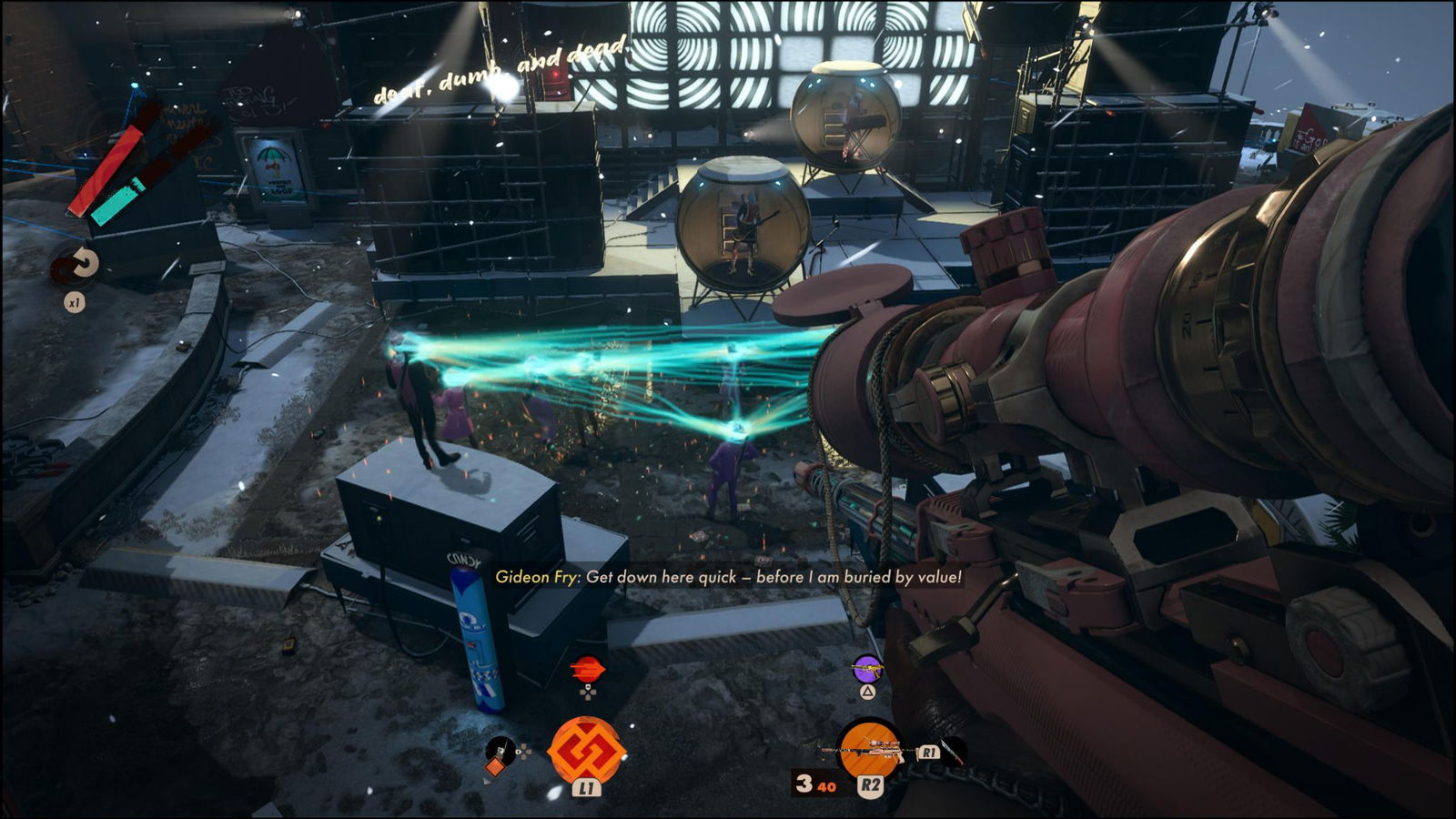Do you have what it takes to break the Deathloop?
When Deathloop was first announced for the PlayStation 5 in 2019, I must admit that I was more than a little intrigued. As a concept, it’s basically a formula for a game that could be played forever; a lesser studio would have made several mistakes that would take this great concept and render it into an act of pure tedium. I’m happy to report that Deathloop is anything but tedious. Instead, it is an interesting exercise in memorizing map layouts, moving your pieces into place, and executing the perfect plan, only for Juliana to invade your game and toss a colossal wrench into your plans.
Game Name: Deathloop
Platform(s): PlayStation 5/ PC
Publisher(s): Bethesda Softworks
Developer(s): Arkane Studios
Release Date: September 14, 2021
Price: £59.99/ $59.99
The concept for Deathloop is simple on paper; you have a single day to kill all eight targets (known as Visionaries) to break the loop. Your targets are Julianna Blake, Dr. Wenjie Evans, Aleksis “The Wolf” Dorsey, Fia Zborowska, Ramblin’ Frank Spicer, Egor Serling, Harriet Morse, and Charlie “Fucking” Montague. Each target has its own habits and weaknesses, and it is your job to get as many as you can in a single place so you can deliver the killing blow. To understand how you are going to track and trap your targets, you will first need to understand how the loop works.
The titular loop takes place over a single day, which is split into 4 sections: morning, afternoon, evening, and night. At the end of each night, or if you happen to die, the loop resets back to the early morning, rinse and repeat until you figure out how to break the loop and free yourself. You have four districts to explore and exploit over the course of the day, Updaam, The Complex, Fristad Rock, and Karl’s Bay. Entering a district will commit one of your time slots, and leaving the area at any time will advance the time of day to the next slot, so choose where you want to go next wisely, as certain opportunities can only be accessed in certain districts at certain times.
Updaam from morning to night
Now that you understand the loop, it’s time to know what you’ll need to do to kill your targets. At the start of the loop, each target will appear in one place at a specific time. Seeing as you can’t be in multiple places at once, you’ll quickly figure out that you will need to find ways to get multiple targets in the same place. Over the course of the loops, you will be gathering information on your targets and manipulating events to ensure that all the pieces fall into place for that one perfect day. I’m not going to give you a step-by-step guide here, but I’ll give you a little hint, 2 – 0 – 2 – 4, it’ll make sense when the time comes.
Overall, while the concept is simple on paper, there are so many moving parts that eventually stack up over the course of the loops that an underprepared player can quickly find themselves overwhelmed. Impatience and haste are your enemy, but being overcautious will increase the chances of Juliana showing up to ruin your day, so you must strike that perfect balance that can only be achieved through trial and error. And trust me, there will be a lot of trial and error through your playthrough.
When starting Deathloop, you are given a choice to either protect the loop or break it. Choosing to break the loop will launch the main campaign where you play as Colt. As previously mentioned, you’ll have the day to kill all eight visionaries and explore the sectors for new weapons, slabs, and trinkets. Choosing to protect the loop will launch the multiplayer mode, where you play as Juliana. The multiplayer mode is similar to invasions in Dark Souls, where you invade the world of a player trying to break the loop, and you must use the tools at your disposal to kill Colt and delay him for another day.
Both Colt and Juliana have an ability that is unique to only them; Colt can die up to 3 times in a single day before the day restarts, while Juliana can take on the appearance of anyone in the map to blend in, even Colt if you’re feeling bold. In terms of general engagements, Juliana has the advantage. She can blend into a crowd and strike at any time, while Colt is none the wiser. She can also mark Colt by pressing down on the d-pad (PS5), which will alert all enemies in the area to his presence. Colt’s main advantage is that he only has to kill Juliana once, whereas Juliana has to kill Colt at most 3 times to win. This creates a game of cat and mouse where the tables can turn for either side at any time. When playing as Colt, it is advisable to find a way to lure the invading player into a Killzone of your design where you have the advantage but the foil in that plan is that Juliana doesn’t have to come to you, sometimes you may have to come directly to her.
When a player is invaded, the tunnels that you use to escape each map are locked by a signal jammer, and in order to open them again, Colt will need to head to the jammer marked on their map and unlock the tunnels with the hackamajig. During the time the tunnels are locked, Juliana has a location that the player is guaranteed to head to. Still, if you manage to unlock those tunnels without Juliana killing you, then the tables have turned, and she must go on the hunt to ensure that you do not escape.
At first, the idea of random invasions seemed like an annoying addition because there’s nothing worse than having a perfect plan ruined by random chance and a griefing player. However, after invading and being invaded a few times, I quickly learned this system is an awesome way to introduce some unpredictability into your loops, so there is never a guarantee that one day will be exactly like the last. From what I can tell so far, you can only be invaded once a day, as I have yet to be invaded twice a day, but I wouldn’t rule it out as a possibility, so keep on your toes and hope that you find Juliana before she finds you.
If you’ve played Dishonored or Prey 2017 before, you will be familiar with the gameplay style of Deathloop. In fact, quite a few of the powers and upgrades at your disposal are either similar or identical to the Outsider powers given to you in Dishonored 1 and 2, Shift is basically Blink, and Nexus is basically Domino, so there’s an element of familiarity to the experience. While the powers (called slabs) at your disposal can make or break a run, it can take several loops before you have built up your powers to a place where you can rely on them consistently, so early on, your best friends will be the weapon in your right hand and the hackamajig or a grenade in your left. While we’re on the subject of grenades, the grenades at your disposal are quite versatile, and you can switch between 3 modes. There’s the standard frag grenade setting that you can cook and throw; there’s the trip mine setting, great for covering hallways and tight spaces. And finally, there’s the proximity mine setting, which is good for covering doorways.
Tools, weapons, and slabs are great, and all, but you will also have access to trinkets that can boost your weapons and innate abilities; one trinket I can’t live without is the one that allows you to double jump, trying to get around after getting used to double jumping is simply an impossibility, but that doesn’t mean that you have to play as I did. With the combination of weapons, slabs, and trinkets, you can truly customise your play style. Feel like going stealthy? Try heading out with Aether, Shift, and silenced weapon (small tip, you can find a silenced weapon in Egor’s lab). Want to go in guns blazing? Bring along Havoc, Karnesis, and a LIMP-10 or Strelak 50-50 to repaint the walls a nice shade of red.
You’re probably wondering how you can carry gear between your loops to build your playstyle in the first place; well, let me lay it out for you here quickly. Early on in your playthrough, you gain access to an ability called infusion. This ability works by gaining a resource called Residuum by either killing visionaries and collecting it from their corpse or by collecting it from random items in the environment that emit a kind of “disco aura.” Trust me; it’ll make sense when you see it. When you extract from a location, you take whatever items that you picked up in the map into your hideout, where you can infuse them for future use. Once an item has been infused, it is then yours forever, even if you die.
If you are familiar with Arkane Studios, you will be familiar with the cartoonish art style in Dishonored and Prey 2017. This art style worked as a contrast to the dark tone of their respective worlds. This cartoonish art style lends itself really well to Deathloop’s more lighthearted tone, and it works more as a supporting element rather than a contrast which changes the context in which the art style works for the gameplay. It’s simply amazing how a change in tone can re-contextualize something familiar and make it feel new.
Another thing that took me by surprise was the level of comedy on display in Deathloop. Sure there were hints of comedy during the gameplay segments we were shown during the lead-up to release. Still, thankfully there were more surprises in store in the final game. The quickest way to ruin a joke is to tell you in advance, so I’ll keep my lips sealed in this regard, but trust me when I say picking up a little statue has never been funnier, nor has it ever been more of a pain in the ass.
All in all, I adore Deathloop. Its deceptively simple premise has been elevated by amazing design, tight systems, and a well throughout and expertly paced story, which all together delivers what is easily my current game of the year for 2021. That said, though, there is always room for improvement, so allow me to layout the only change I would make to the current systems in place.
The first system I would change would be the addition of weapon degradation, now hear me out! Being able to carry equipment between loops really helps the player build their playstyle, and it’s fun to mix and match, but after a certain amount of loops, you basically have access to all you need, so residuum has no real use for the player and thus one of the biggest systems in the game is rendered useless. Additionally, the haptic trigger response for when your weapon gets jammed is brilliant, and it goes completely unused once you have purple or above weapons because they are immune to jamming, it seems odd to go through the effort of creating a system only to render it completely redundant in a matter of minutes.
I want to take this time to say that I really enjoyed my time with Deathloop; it has all of the fun of a roguelike without the randomness that can render them unfair at times. Deathloop has tight and fun gameplay, and it perfectly captures the “one more minute” mindset that so many games wish they could capture. Everyone at Arkane Studios should be proud of the game they made as it is clear that it was time well spent, and Arkane has shown once again that they are a studio to be respected.
Deathloop was provided to us by Bethesda Softworks for review purposes. For more information on how we review video games and other media/technology, please review our Review Guideline/Scoring Policy.
Want more game reviews from The Outerhaven? Consider the following:
The Great Ace Attorney Chronicles Review
Ghost Of Tsushima Director’s Cut PS5 Review
Aliens: Fireteam Elite Review (PC)
Deathloop PS5 Review
Summary
Deathloop is an exercise in trial and error, you must use the knowledge you have gained from previous loops to set your pawns in place in order to strike at the heart of the loop. It’s like the worlds most elaborate game of chess.
Pros
- Excellent gameplay
- Fun and intuitive systems
- Brimming with personality
- DualSense controller utilized to its fullest
Cons
- Some systems become obsolete quickly
-
Deathloop


